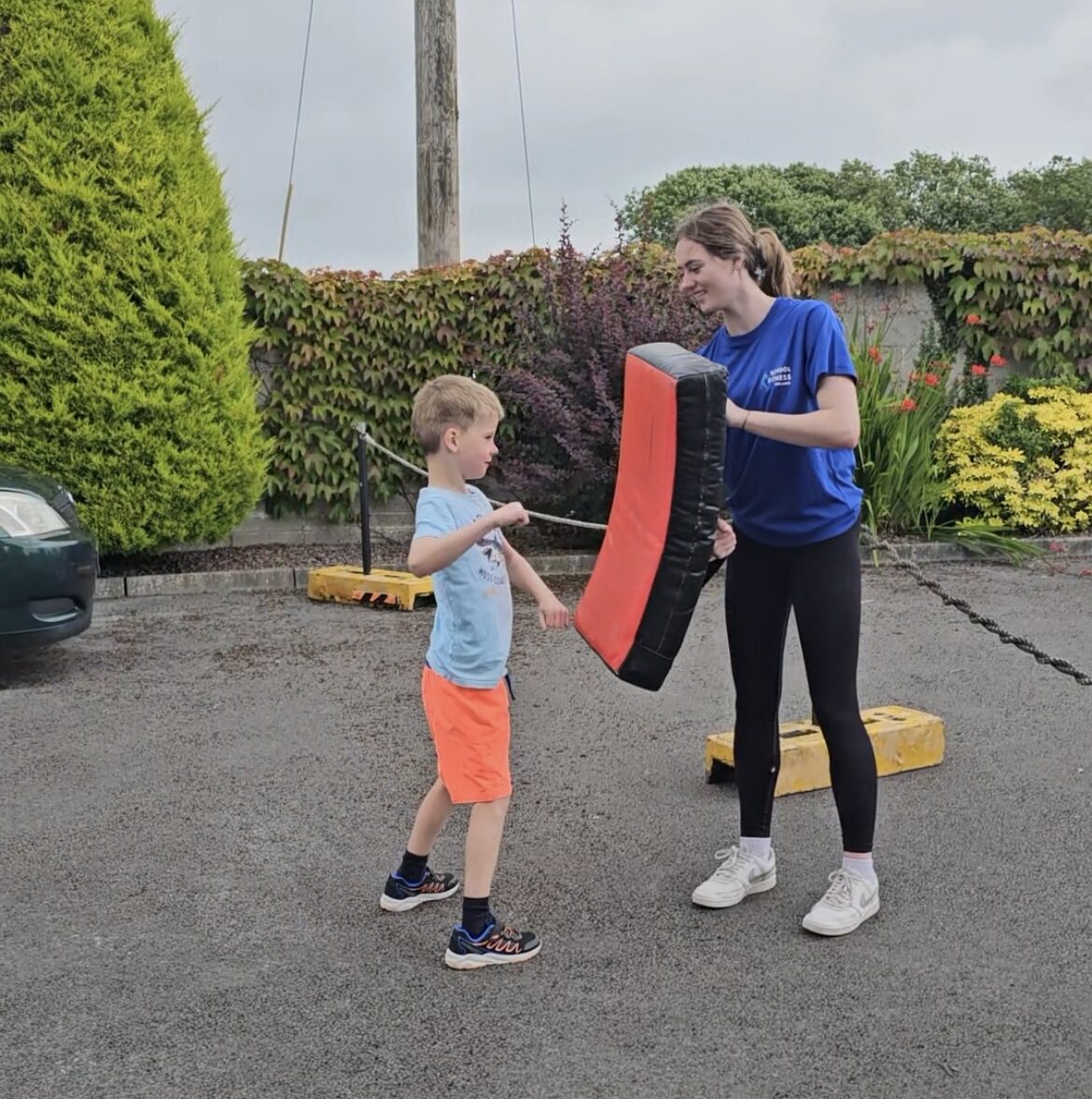
By Sam Wheeldon
It’s no secret that kids today are moving less than they used to, something that’s causing real concern when it comes to their overall motor development (Coach Laura dives into this in her latest article!). According to the Active Start guidelines from the National Association for Sport and Physical Education (NASPE), helping young children develop movement skills should be a key focus in early education (Goodway et al., 2009).
Fundamental Movement Skills (FMS) are the building blocks for confident, capable, and motivated movers. But the reality is, many kids in primary school right through to secondary school, aren’t mastering these skills as they should. Without a solid foundation in movement, it’s harder for them to pick up more complex skills, enjoy sports, and even develop socially and cognitively (V. Gregory Payne & Isaacs, 1987). Simply put, if we want kids to stay active for life, we need to make sure they’re getting the right start!
Kids naturally develop their FMS by playing different sports and being active. In fact, many experts, including sports leaders and paediatricians recommend that children try multiple sports until at least early adolescence rather than specialising too soon. This helps them build skills across all three key FMS categories.
But in Ireland, there’s a strong focus on sports that involve object control skills, especially for kids. The Children’s Sport Participation and Physical Activity (CSPPA) study in 2022 found that four out of the five most popular sports for primary school boys were ball sports. Girls took part in a slightly wider variety of activities, but overall, there’s still a big emphasis on ball games (CSPPA Report, 2022). (Check out Tables 1.1 & 1.2 below for the breakdown!).
| Boys’ Sports Participation Rates | |||
| Primary | Secondary | ||
| Sport | % | Sport | % |
| Soccer | 56 | Soccer | 41 |
| Gaelic Football | 47 | Gaelic Football | 38 |
| Hurling | 37 | Hurling | 26 |
| Swimming | 36 | Swimming | 26 |
| Rugby | 25 | Weight Training | 25 |
| Girls’ Sports Participation Rates | |||
| Primary | Secondary | ||
| Sport | % | Sport | % |
| Swimming | 45 | Swimming | 34 |
| Gaelic Football | 43 | Gaelic Football | 33 |
| Camogie | 40 | Dance | 25 |
| Dance | 32 | Camogie | 22 |
| Athletics | 29 | Cycling | 20 |
While ball sports help kids develop important motor skills, they don’t cover all the FMS kids need. Even children who excel in one area of movement may still struggle with others. Plus, not every child is drawn to mainstream sports, so it’s important to offer alternative ways for them to build these essential skills while having fun.
One often-overlooked activity with incredible benefits for both physical and mental development is martial arts. A review of multiple studies found that martial arts training improves cardiorespiratory fitness, speed, agility, strength, flexibility, coordination, and balance in children (Stamenković et al., 2022). One study even showed that five year olds who practiced karate for a year had twice the physical fitness growth rate compared to those in regular PE classes (Pavlova, Bodnar & Vitos, 2018). Martial arts training introduces a well-rounded mix of movement patterns, including locomotion, balance, and even object control. And for kids already involved in other sports, it can be a great supplemental activity thanks to its high potential for skill transfer, meaning the skills learned in martial arts can carry over to other sports. For example, a basketball player who develops explosive jumping power for dunking might find high jump in athletics comes naturally. Or a wrestler skilled in takedowns could have an instinctive understanding of rugby tackling without much extra training. With its diverse techniques and movement patterns, martial arts offer a wide range of skills that can benefit athletes across different sports.
One martial art in particular (taught by several School Fitness Ireland coaches!) stands out for its exceptional potential to enhance overall movement skills: Karate. With its mix of dynamic footwork, coordination, strength, and discipline, karate not only helps kids master FMS but also builds a foundation that can support success in a variety of other sports.
Karate isn’t just about kicks and punches; it’s an incredibly well rounded activity that strengthens balance, coordination, flexibility, and overall physical literacy. Plus, the skills learned in karate transfer to other sports, making it a great foundation for young athletes. Whether it’s improving agility for football, explosiveness for sprinting, or focus for academics, karate has something for everyone. Let’s break down how karate training builds physical skills that carry over into other sports and activities.
Karate training starts from the ground up, and stances are key. Holding deep, controlled positions strengthens the legs, improves balance, and enhances stability; fundamental for many sports.
Take Zenkutsu-dachi (forward leaning stance). This position increases ankle flexibility (dorsiflexion), which research links to improved vertical jump performance, a huge plus for basketball and volleyball players (Panoutsakopoulos & Bassa, 2023). Strong, stable ankles also help prevent injuries, something crucial for high-impact sports.
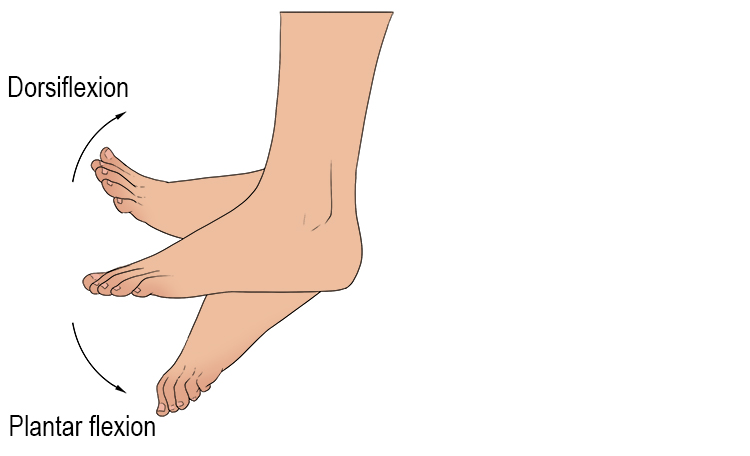
Karate kicks develop dynamic flexibility, explosive strength and coordination, all essential for different sports.
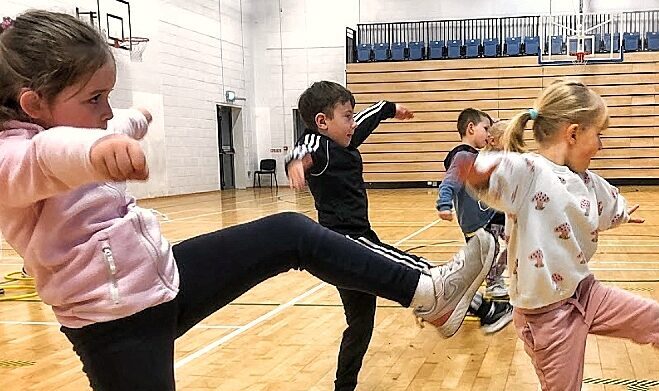
Karate includes two main types of training:
The movement involved in Kumite training builds agility, rhythm, and reaction time which are critical for sports like dance and football. It also mirrors the quick lateral movements needed by soccer goalkeepers and table tennis players, who must stay on their toes and react instantly to the ball.
While karate isn’t primarily a grappling martial art like Judo or Jiu-Jitsu, it still includes throws and takedowns that can be extremely beneficial for contact sports.
One example is Morote Gari, a lesser known karate throw that closely resembles the double leg takedown in wrestling. This technique mimics rugby tackles, making karate a great cross training option for players looking to improve their tackling ability and body control in Gaelic football and rugby.
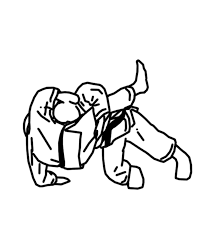
Karate isn’t just about strong punches, it’s also a great way to build upper body strength! One key technique behind this is Hikite, the act of pulling one arm back while the other strikes, blocks, or locks. This movement isn’t just for show; it generates powerful rotational force and heavily engages muscles like the lats and traps, helping to build strength and stability.
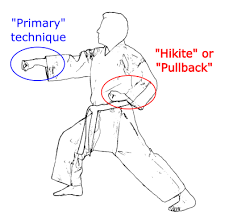
Along with classic bodyweight exercises like push-ups and sit-ups, Hikite plays a big role in karate’s ability to develop upper-body power. Plus, this pulling motion has crossover benefits for other sports, think throwing in cricket and handball, overhead serves in tennis and volleyball, and even swimming strokes like the front crawl!
Karate often incorporates training tools like tennis balls, bean bags, foam noodles, and even blunt weapons. These exercises aren’t just fun, they build hand eye coordination, proprioception, and spatial awareness. This is especially valuable for kids who may not engage in traditional ball sports but still need to develop object control skills.
Martial arts are more than just a great physical workout, they improve mental and cognitive skills that benefit both sports and academics.
Cognitive benefits include:
Kata, the set sequences of movements practiced in karate, are more than just a way to earn new belts, they’re a powerful tool for developing focus, memory, and discipline. These routines can range from 20 moves for beginners to over 50 at black belt level, requiring kids to learn, practice, and perfect them over time.
Research has shown that practicing kata can significantly improve concentration and attention in school-aged children. It’s also been linked to faster reaction times, better working memory, and even increased blood flow to the brain, all of which can support learning. Plus, studies suggest it helps reduce aggression, social difficulties, and symptoms of oppositional defiance disorder (which includes frequent anger, irritability, and arguing) (Bhattacharya, Chatterjee & Mondal, 2022; Farzaneh Parsamajd & Saeid Teymori, 2024).
Given all these benefits, it’s not surprising that kids who practice martial arts tend to score higher academically than those who don’t play sports, or even those involved in team sports (Giordano, Gómez-López & Alesi, 2021). Karate isn’t just great for physical skills, it’s a serious brain booster too!
At School Fitness Ireland, we believe there’s a sport for every child, and we’re here to help schools introduce new activities that can engage all students. Karate is a fun, non competitive way to build confidence, develop movement skills, and support physical and cognitive growth. If you’re looking for something different to bring to your school, why not give martial arts a go? Your students might just find their new favourite sport! Click here to book!